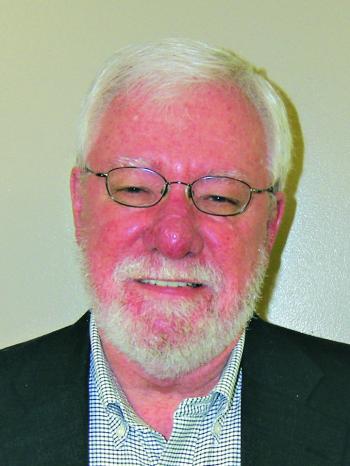
Jim Bradshaw
Caught in the outbreak of World War I
By Jim Bradshaw
Adolphus Sandoz of Opelousas was in the wrong place at the wrong time when World War I began in Europe in 1914.
The St. Landry Clarion reported on Sept. 12, 1914, that the Civil War veteran had returned from Europe “after much difficulty getting out of Germany, where he landed on the day Kaiser Wilhelm declared war against the French.”
Sandoz “was given a hearty welcome [home] by his many friends … who had been anxiously awaiting his return … since [learning] he had been caught in the great European war zone.”
Hostilities began in Europe when Austria-Hungary declared war on Serbia on July 28, 1914, a month after the assassination by a Serb of Austrian Archduke Franz Ferdinand. Russia quickly joined sides with the Serbians, and, because of old treaties, that brought France into the war. On the other side, Germany aligned itself with Austria-Hungary, and declared war on Russia on July 21 and on France on Aug. 3. Great Britain was then drawn into the war because it was an ally of France.
That last alliance was part of Sandoz’s problem. According to the newspaper, “While in Berlin, Mr. Sandoz was arrested as an English spy, but was later released.” He then “made his way to London with a great deal of trouble, where he remained for seven days before boarding a steamer for America.”
“The old gentlemen” left Opelousas in early July, “expecting to visit the principal cities in Germany, France, England, and other European countries.” He was nearly 70 years old and said it was time for him to make a trip that he had been wanting to make for years. But his travels were cut short when he reached Europe and “discovered he was in the midst of world strife and … readily recognized that the sooner he could strike for America the better off he would be.”
The trip from Liverpool to New York took “less than a week and a half,” and, the Clarion reported, “He now has the pleasant and arduous task of relating all he knows about the Europeans to scores of interested friends.”
It appears that had he been a betting man, Sandoz would have put his money on the Germans. He said conditions in Germany and England “differed a great deal.”
In Germany, he said, “not only the soldiers but the women and children were very enthusiastic, having explicit confidence in the Kaiser’s formidable war machine, whilst in England very little attention was being given to the present … strife, the Britons going to war with very little enthusiasm.”
He was wrong about the ultimate victory of the Germans, but he was right about one thing, saying, “the various nations in this great entanglement are determined to fight to the last,” and that “the war promise to be a long and drawn-out affair.”
World War I did not end until November 1918. More than 9 million combatants and 7 million civilians were killed. More than 100,000 of the dead were Americans, even though the United States did not enter the war until after German submarines began attacking American ships in 1917.
Sandoz did not see the end of the war. Different genealogies give his date of death either as September 1915 or September 1916. He never got a chance to finish his grand tour of Europe.
You can contact Jim Bradshaw at jimbradshaw4321@gmail.com or P.O. Box 1121, Washington, LA 70589.
- Log in to post comments
